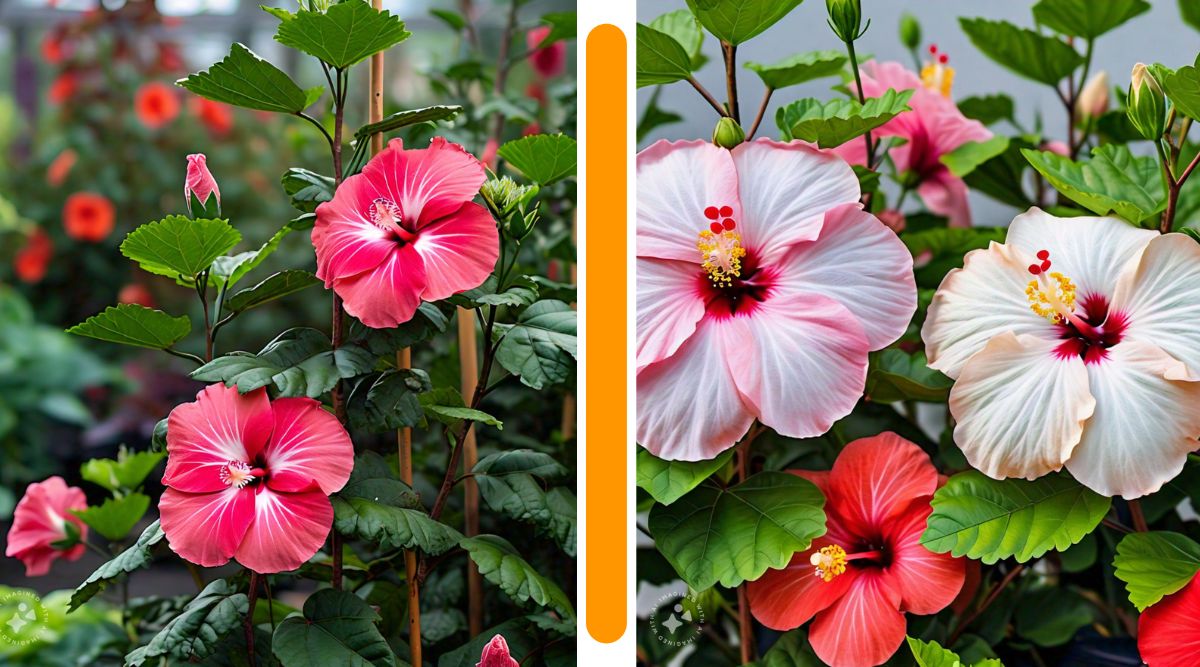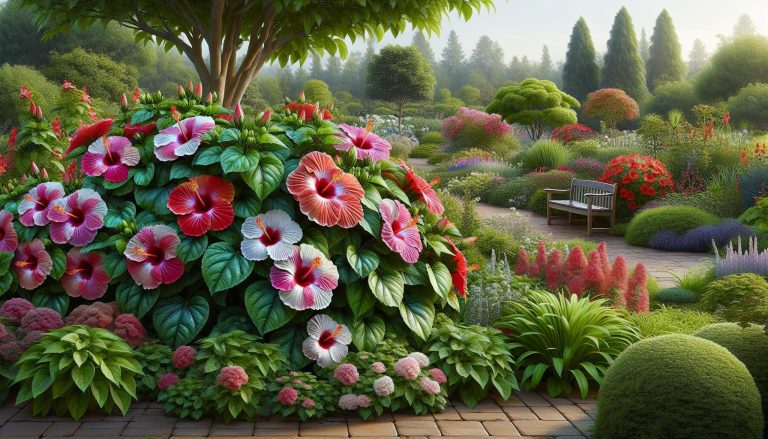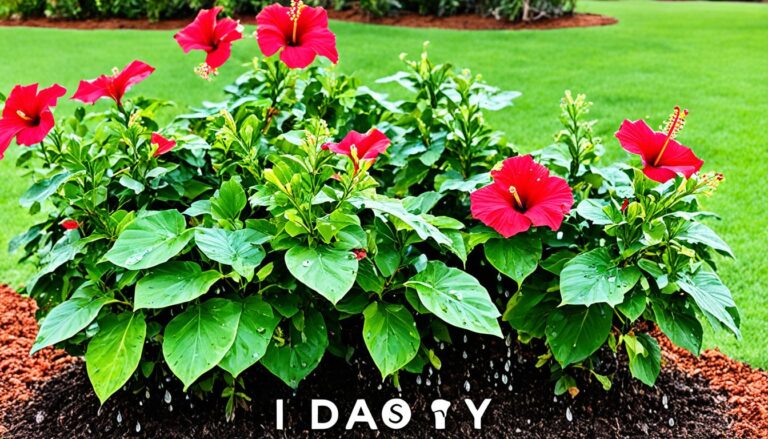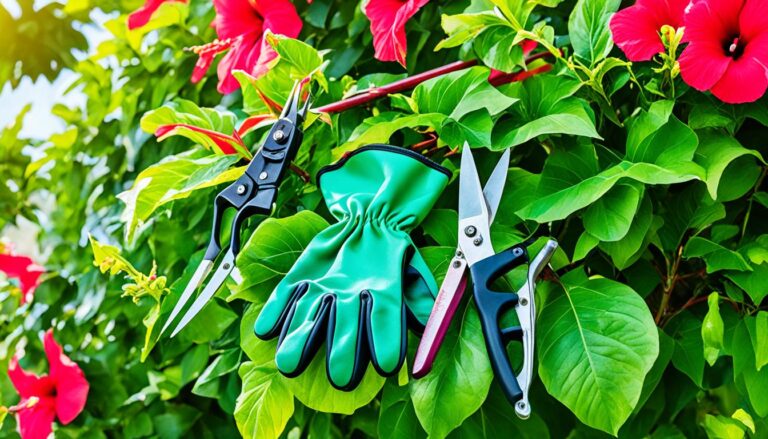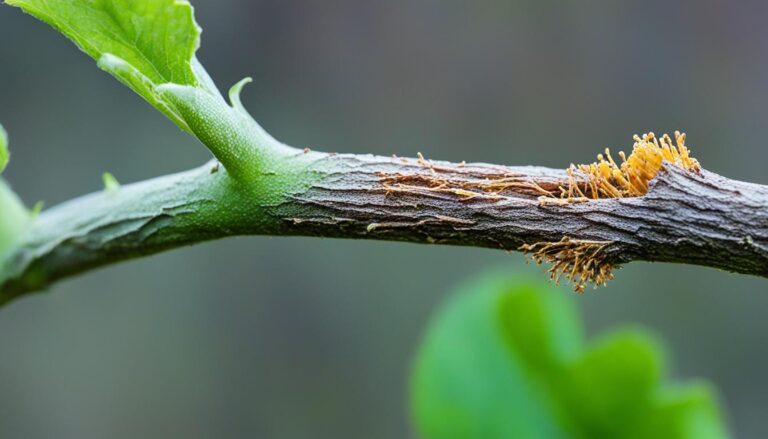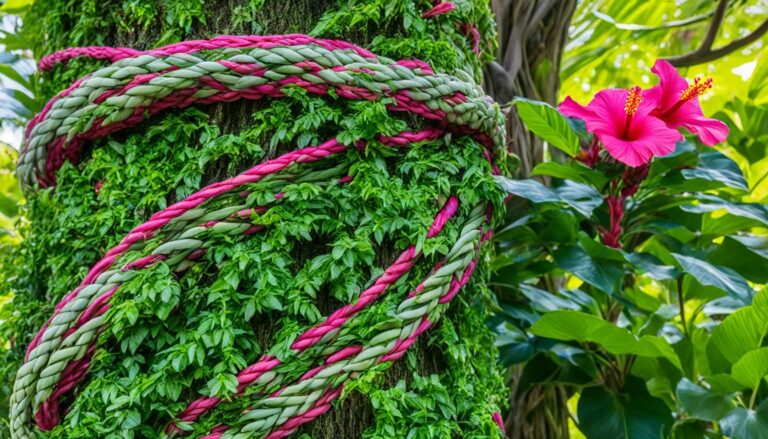Hardy Hibiscus vs Tropical Hibiscus – Understanding the Differences
As a passionate gardener with seven years of experience and a special love for hibiscus, I’m excited to dive into the world of these stunning flowers.
Let’s explore the key differences between hardy and tropical hibiscus, two distinct varieties that often confuse novice gardeners.
Hibiscus plants are renowned for their large, showy flowers that bring a touch of tropical beauty to any garden.
However, not all hibiscus are created equal. The two main types – hardy and tropical – have distinct characteristics that affect their care and cultivation.
Understanding these differences is crucial for successful hibiscus growth.
Origin and Natural Habitats
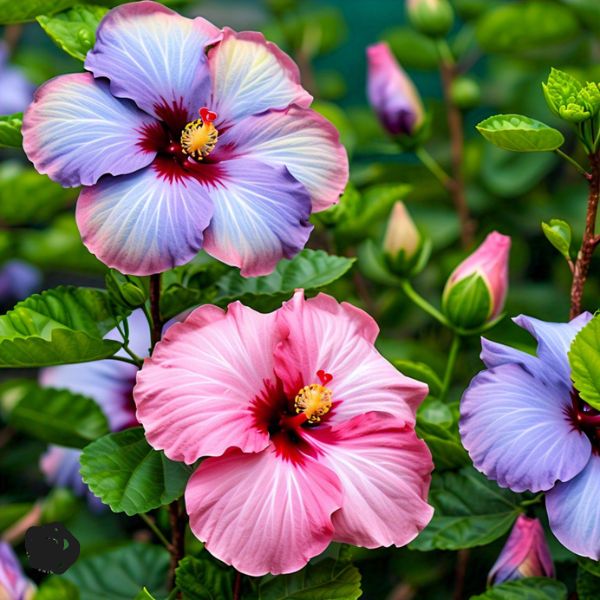
Hardy Hibiscus
Hardy hibiscus, also known as perennial hibiscus, are native to North America.
These plants have adapted to survive in temperate climates with cold winters. You’ll find them growing wild in wetlands and along riverbanks from the Midwest to the East Coast.
Tropical Hibiscus
Tropical hibiscus, on the other hand, hail from warm, humid regions like Hawaii, the Caribbean, and parts of Asia.
These plants thrive in balmy conditions and are not naturally equipped to handle freezing temperatures.
Physical Characteristics
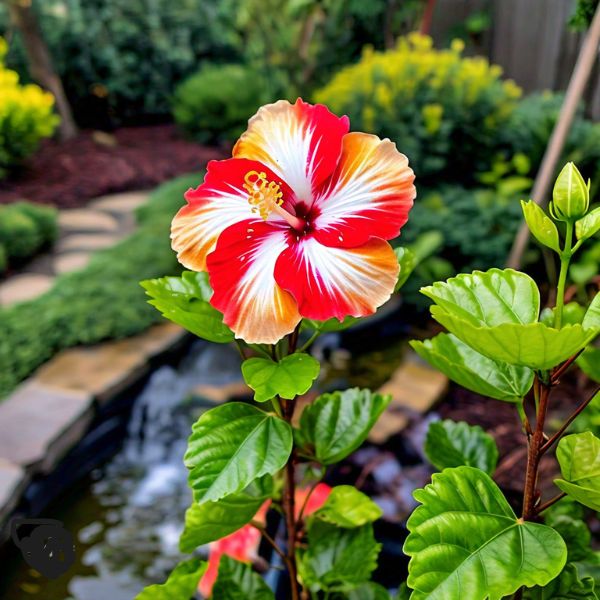
Let’s break down the physical differences between these two hibiscus types:
| Characteristic | Hardy Hibiscus | Tropical Hibiscus |
|---|---|---|
| Leaf Shape | Heart-shaped, often with serrated edges | Glossy, oval to lance-shaped |
| Flower Size | Typically larger, up to 12 inches | Usually 4-6 inches in diameter |
| Plant Size | Can grow up to 8 feet tall | Generally 3-5 feet tall |
| Stem Structure | Herbaceous, die back in winter | Woody, evergreen in warm climates |
In my garden, I have both types. The hardy hibiscus always surprises visitors with its dinner plate-sized blooms, while the tropical varieties offer a more delicate beauty.
Climate Tolerance and Hardiness
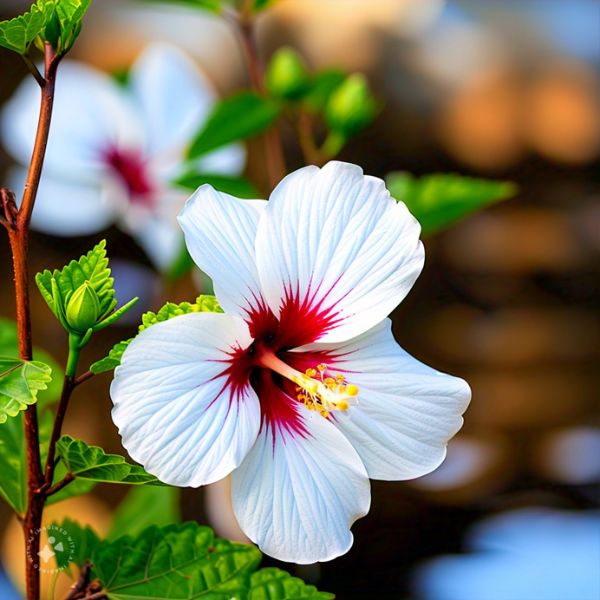
Hardy Hibiscus:
- Can withstand temperatures as low as -30°F (-34°C)
- Dies back to the ground in winter, re-emerging in spring
- Thrives in USDA zones 4-9
Tropical Hibiscus:
- Sensitive to temperatures below 50°F (10°C)
- Cannot survive frost
- Best suited for USDA zones 9-11 or as container plants in colder regions
I remember the first time I left a tropical hibiscus outside during a mild frost – needless to say, it was a costly lesson in hibiscus hardiness!
Growing Requirements
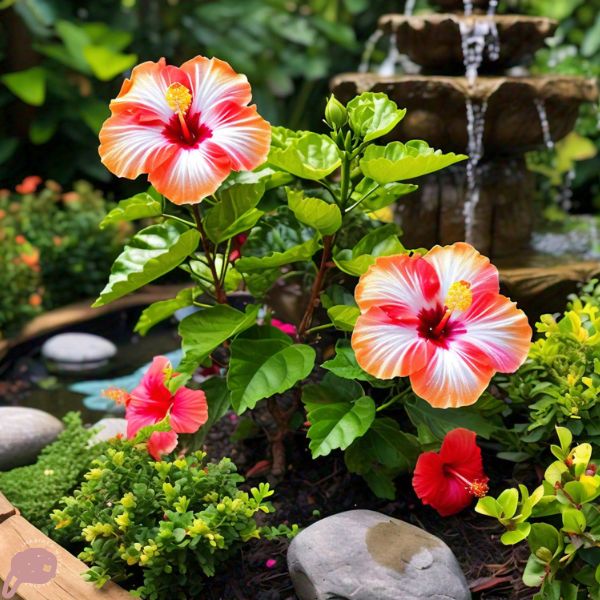
Both types of hibiscus have specific needs for optimal growth:
Soil Preferences
- Hardy Hibiscus: Adapts to various soil types but prefers rich, moist soil
- Tropical Hibiscus: Requires well-draining, slightly acidic soil
Sunlight Needs
- Hardy Hibiscus: Full sun to partial shade
- Tropical Hibiscus: Full sun for best flowering
Watering Requirements
- Hardy Hibiscus: Tolerates wet conditions, needs consistent moisture
- Tropical Hibiscus: Regular watering, but avoid waterlogging
Fertilization
- Hardy Hibiscus: Light feeding in spring
- Tropical Hibiscus: Regular feeding throughout the growing season
Blooming Patterns
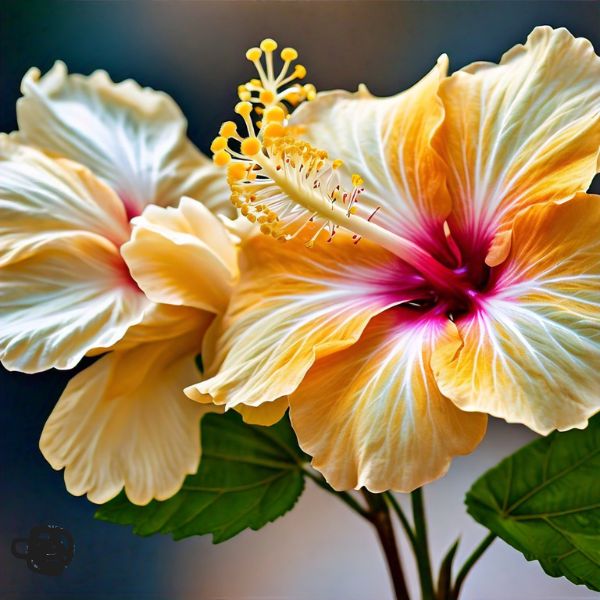
Understanding the blooming patterns can help you plan your garden for continuous color:
Hardy Hibiscus:
- Blooms from midsummer to early fall
- Flowers last only 1-2 days but are produced in abundance
Tropical Hibiscus:
- Can bloom year-round in warm climates
- Individual flowers often last 1-3 days
For more information on hibiscus blooming habits, check out our article on when do hibiscus bloom.
Maintenance and Care
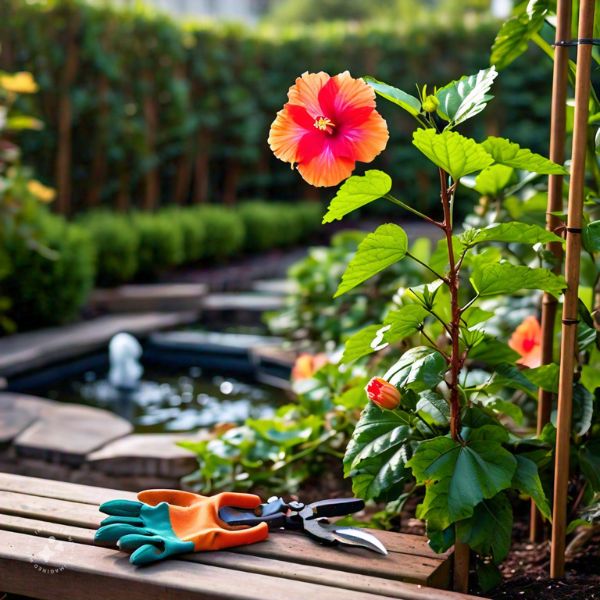
Pruning Techniques
- Hardy Hibiscus: Cut back dead stems in late winter or early spring
- Tropical Hibiscus: Regular pruning to maintain shape and promote blooming
Winter Care
- Hardy Hibiscus: Mulch heavily in colder regions
- Tropical Hibiscus: Bring indoors or provide frost protection
Pest and Disease Management
Both types can be susceptible to pests like aphids and whiteflies.
For safe pest control methods, refer to our guide on safe sprays for hibiscus bugs.
Popular Varieties
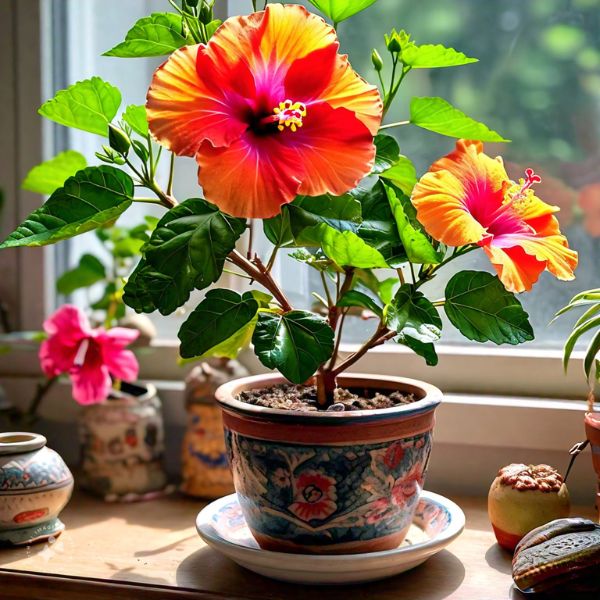
Hardy Hibiscus Cultivars
- ‘Lord Baltimore’ – Bright red flowers
- ‘Blue River II’ – Pure white blooms
- ‘Kopper King’ – Pink flowers with red centers
Tropical Hibiscus Varieties
- ‘Brilliant’ – Classic red
- ‘Sunny Wind’ – Yellow with a red center
- ‘Pink Versicolor’ – Multi-toned pink blooms
Uses in Landscaping and Gardens
Hardy hibiscus make excellent backdrop plants in perennial gardens due to their impressive height. They’re particularly striking near water features.
Tropical hibiscus, with their glossy leaves and vibrant flowers, are perfect for container gardens or as focal points on patios.
In my experience, they also make wonderful houseplants when provided with enough light.
Making the Right Choice for Your Garden
When deciding between hardy and tropical hibiscus, consider:
- Your local climate
- Available growing space
- Willingness to overwinter plants indoors
- Desired bloom time and size
If you live in a colder region and want low-maintenance plants, hardy hibiscus is your best bet.
For those in warmer areas or willing to treat hibiscus as annuals, tropical varieties offer a wider range of colors and year-round blooming potential.
Conclusion
Whether you choose the robust, cold-tolerant hardy hibiscus or the diverse, warm-loving tropical hibiscus, these plants are sure to add a splash of color and exotic beauty to your garden.
Each type has its unique charms and challenges, making hibiscus cultivation an exciting journey for any gardener.
Remember, the key to success with either type is understanding their specific needs and providing the right care. Happy gardening, and may your hibiscus thrive!
For more in-depth information on hibiscus care, don’t forget to check out our hibiscus plant care guide.

